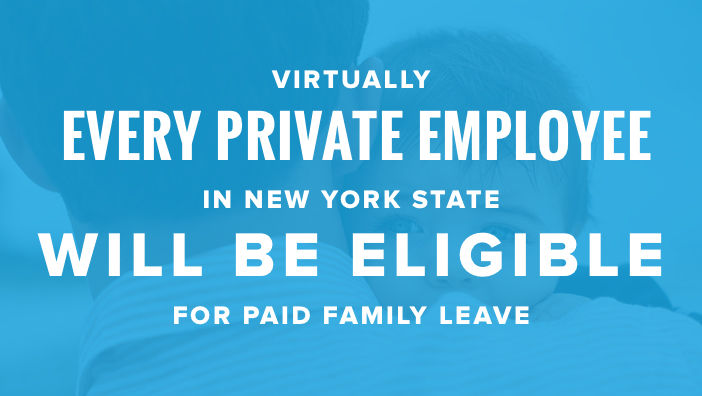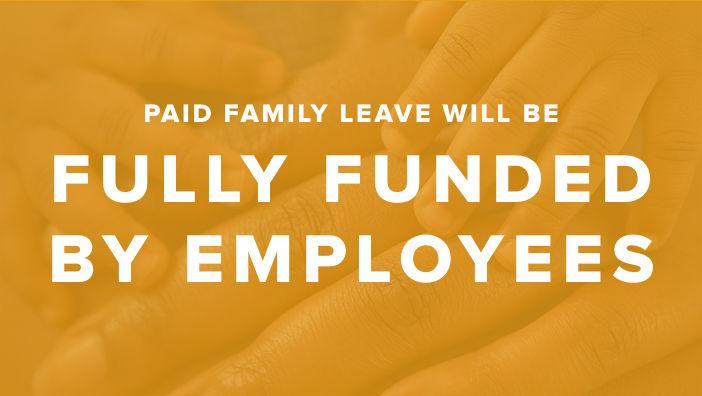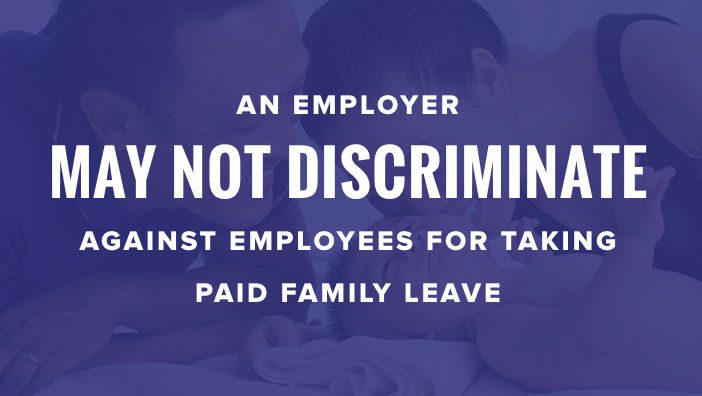
New York: Additional Paid Family Leave Forms Now Available
Updated on May 9th 2018 03:06 PM
PFL Resources
The following resources (among others) are now available:
- Model Language for Employee Materials: Employers are required to inform their employees about their PFL rights, either in an employee handbook or other written materials. The Model Language for Employee Materials document provides compliant language employers can use and customize based on their PFL policies and procedures. The document also lists topics that employee materials should include.
- Note: These materials are not offered as legal advice. It is strongly advised that employers have their company attorneys review the drafts before employee distribution.
- Statement of Rights for Paid Family Leave: Employers must provide the Statement of Rights for Paid Family Leave to employees when they take PFL or take time off from work for a PFL-qualifying event, but have not requested PFL. Employers may also provide this form to all employees to educate them about PFL.
New York State has released additional forms regarding the Paid Family Leave (PFL) law. Links to the new forms are provided below.
Paid Family Leave Forms
The following PFL forms (among others) are now available:
- Bond with a Newborn, a Newly Adopted or Fostered Child: This form is to be used when an employee is requesting PFL to take time off to bond with a newly born, adopted, or fostered child.
- Care for a Family Member with Serious Health Condition: This form is to be used when an employee is requesting PFL to take time off to care for a family member with a serious health condition.
- Assist Families in Connection with a Military Deployment: This form is to be used when an employee is requesting PFL to help relieve family pressures when someone is called to active military service abroad.
The state anticipates additional PFL forms to be released soon. Click here to check for updates.
Background
New York has enacted a PFL law, to be phased in beginning January 1, 2018, that will apply to employers of all business sizes. When the law is fully phased in over the next several years, employees will be eligible for 12 weeks of paid, job-protected leave when certain life events occur. During any period of family leave, employers are required to maintain any existing health benefits of eligible employees in force for the duration of such leave. Click here for additional details.
To review other laws specific to New York, visit the State Laws section, click on New York, and choose your topic of interest from the left-hand navigation menu.
New York State has released three forms regarding the Paid Family Leave (PFL) law. Links to the new forms are provided below.
Paid Family Leave Forms
The following PFL forms are now available:
- Employer’s Application for Voluntary Coverage (No Employee Contribution) (PFL-135)
- Employers exempt from providing mandatory PFL may provide voluntary PFL by completing PFL-135 (if no employee contribution is required).
- Employer’s Application for Voluntary Coverage (Employee Contribution Required) (PFL-136)
- Employers exempt from providing mandatory PFL may provide voluntary PFL by completing PFL-136 (if they will be requiring an employee contribution).
- Employee Opt-Out of Paid Family Leave Benefits (PFL-Waiver)
- If an employee does not expect to work long enoughto qualify for PFL (e.g., a seasonal worker), the employee may opt out of PFL by completing the Waiver of Benefits form.
The state anticipates additional PFL forms to be released soon. Click here to check for updates.
Background
New York has enacted a Paid Family Leave (PFL) law, to be phased in beginning January 1, 2018, that will apply to employers of all business sizes. When the law is fully phased in over the next several years, employees will be eligible for 12 weeks of paid, job-protected leave when certain life events occur. During any period of family leave, employers are required to maintain any existing health benefits of eligible employees in force for the duration of such leave. Click here for additional details.
To see our comprehensive guide on this new law starting in 2018, please click here.



